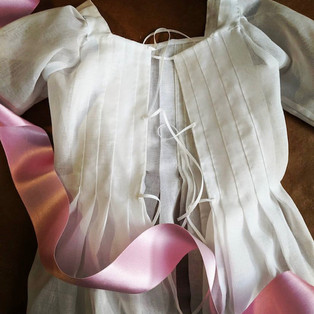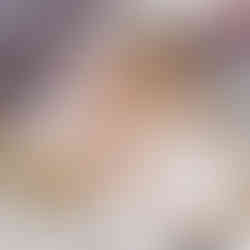What Your Hands Can Do
- Amber Mendenhall

- Jan 25, 2022
- 5 min read
Updated: Nov 7
There’s a hashtag a mentor of mine uses on her Instagram (do I sound hip yet?) and I think about it almost daily…#RememberWhatYourHandsCanDo
We use our hands for every aspect of our lives.
To cook. To guide.
To clean. To love.
To comfort. To create.
Yet few think about how that ability makes us feel. Truly. Deeply. How does it make you feel? In thinking about the hashtag Sarah created several years ago I’ve come to appreciate these crazy nimble, spindly spider hands my little brother once teased me about.
I’m a doer. I’m one of those people that has a to-do list ten miles long and am happiest that way. Seriously, I get anxious and mopey if I don’t have anything left to cross off… and I have to cross it off to feel truly satisfied with it. I have to use my hands for that closure. My to-do-lists nowadays usually list out household chores like laundry, cooking, and cleaning (which is never-ending having two young tornados ripping through the house) but there’s always an element of creating something on my to-do list that makes my day feel complete. Sometimes it’s trying out a new dish, planting a seed or plant in the garden, planning something new, or simply stitching a bit. Without creating something with my hands I don’t feel grounded. I don’t feel like my core is satiated. Something is missing without using my hands in these ways.
L to R: 1. Re-creation of the 1776 painting by Henry Walton, Plucking of the Turkey. The bedgown I am wearing was made from my line of linen print material. 2. Petticoat fabric piece I was designing and ran a bit short on the fabric, Lesson learned. Never assume. 3. A gown I made with chine silk that I found in New Zealand on my honeymoon.
I think that’s why I fell in love with historical clothing and the way things were made before machines. There’s such a care and thoughtfulness in the way that pre-1860s clothing was made that when I get a chance to make or recreate it, I feel closer to something in my innermost being. I feel closer to my ancestors, both recent and ancient. There’s a familiarity with using my hands to create something that they, themselves, would have revered as useful, beautiful, desirable; and then getting to wear it is exhilarating. I feel even one more breath closer to them. This would not be possible if I weren’t able to use my hands to do it.
My favorite things to make —and I don’t get to make them nearly as often as I would like— are 18th century caps. To the layperson, one might think “one of those silly Miss Muffet hats?”... and yes, you are correct. Little Miss Muffet’s hat that we see in cartoon nursery rhymes is derived from the very silly, very large, ruffly caps from about 1782-1789 when the bigger was the better.
Be it ruffles, printed fabrics, rumps, bosoms, hair, the 1780s were all about BIG. These puffed caps are fascinating to me. There are few originals in existence now, but when you examine them, you can see the care and detail of each individual stitch. Someone made that, stitch by stitch, with their own fingers for someone to wear for a season and possibly not any more than that. In the 18th century labor was cheap and the growing tradesperson class was able to employ thousands upon thousands of hands to feed the fleeting fancies of fashion. A milliner (at the time more of a tradesperson who dealt in readymade accessories and various other conveniences and whims rather than a person only specializing in hats) would employ someone or make these caps of extravagance (or practicality) by themselves.
L to R: Hand-stitching edged details. A simple cap and its three pieces. Stitching a fine rolled hem.
Every stitch was painstakingly made with steady, delicate hands so that the stitching would be as invisible as possible and preserve the often more-expensive-than-the-labor fabric. 18th century and early 19th century caps were made in an ingenious way. Firstly, they consist of three main pieces: the caul (head or crown part of the cap), the ruffle (sometimes pleated, sometimes gathered and sometimes no fullness at all), and the band (the sometimes-shaped piece of fabric that connects the other two together). Each individual piece is finished along the edges before it is put together. Edges can be treated with very tiny — sometimes as small as 1mm wide— double folded hems, rolled hems, or whip-rolled hems, and after they have been finished you whipstitch them all together. That’s it. The treatment and making of these caps are so simple, so purposeful, so efficient, that a practiced person can make a simple one in about three hours — at least that’s my standing record after years of practicing. Originals come in great varieties of stitch length, cut, fullness, quality of fabric, but the basics remain overwhelmingly true: three main pieces, finish the pieces first, whipstitch everything together… all by hand.
When I make these caps, I’m always amazed at the point when they seem to arrive at their final self. Becoming one thing from three. Working with those pieces, creating the tiniest hems I can manage between my fingers, whipping the pieces together and WHOOSH. I have a thing! A finished thing! Feeling the raw material of the fabric into a finished, wearable product and seeing your signature in stitches along every single edge of that piece is truly remarkable. And after it’s all done, you remember “My hands did that.” I made that. I can wear that. My ancestors wore that.” The satisfaction that comes from this process and finish is beyond words that I can capture to place here. It hits me to my core, and I feel closer to something… all done with my hands.
Many people feel frustrated when they can’t engage in their hobby/craft each day. Not all of us are able to create a new thing from start to finish and gain a sense of satisfaction that comes with making something. Especially now that we’re entranced in this odd reality before us of isolation and unknowing. Our psyches are taxed now more than ever, but dear heart, I encourage you to remember that everything you do is an act of creating.
L to R: Me, not famous, in my packed out, messy studio. Keeping it real is a good thing. My two favorite little tornados.
Your hands are able to create the clean. Create the food. Create the folded laundry piles. Create the mess. Even if you aren’t able to make something for pure pleasure that day, your hands have the magic to create in every act that lays before you. Search out and find the joy in the creating, #RememberWhatYourHandsCanDo.
Author’s Note:
If you want to follow along with the hashtag #RememberWhatYourHandsCanDo, please follow my friend and mentor, Sarah E. Woodyward @SewnStories (on Instagram). She is the owner of Sewn Company, based in creating thoughtfully with hand stitching. www.sewncompany.com

About the Author:
Amber Mendenhall is the owner of Virgil’s Fine Goods, a sewing shop providing finely curated historical accessories, patterns, and supplies. She also carries her own line of reproduction fabrics. Amber holds a Bachelor’s of Specialized Studies in Historical Clothing Construction and Early American History and interned at the Colonial Williamsburg Millinery Shop. Amber specializes in historical reproductions and has created for museums, Broadway, opera, and ballet productions.
Website: virgilsfinegoods.com
Instagram: @ladyofthewilderness @virgilsfinegoods Facebook: facebook.com/VirgilsFineGoods





























Comments